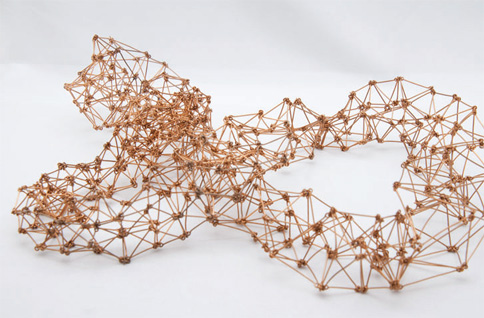Nature’s way

Rococo’s wild, centrifugal twist on Baroque is a refreshing antidote to straight-edged Modernism. The Rococo style gave nature’s rampant, tumbling floridity leave to roar, but in hard-line Modernism its tangled undergrowth is plucked and combed and its voice turned down to a whisper.
Humans have worked for millennia to banish the dirty, smelly bits of nature from their homes and cities, while taming and nurturing the useful elements. Industrialisation harnessed its brute physical force and digitisation straightened its curvaceous lines. But a new exhibition will show that nature’s primal scream still aims to echo in 3D design – even in its Modernist form.
Graphic Nature, at Sheffield’s Millennium Gallery, unites work from a range of contemporary artists and designers inspired by nature. A fly’s alien eyeball – or perhaps a laden honeycomb – looks to have inspired Wertel Oberfell’s lighting concept Dragonfly, while Susanna Bonometti has organised roots into complex (if straight-edged) wooden matrices for her series of sculptural works, which includes Infinite Rhizome.
Contemporary pieces will sit alongside a series of historical works by John Ruskin and William Morris – two nature-lovers who deserve to be present at any exhibition on design and nature. One of Ruskin’s apposite quotations can easily be extended to encompass designers. He recommended that an architect should live in nature rather than the city: ’Send him out to our hills, and let him understand there what Nature understands by a buttress, and what by a dome’.
-
Post a comment




